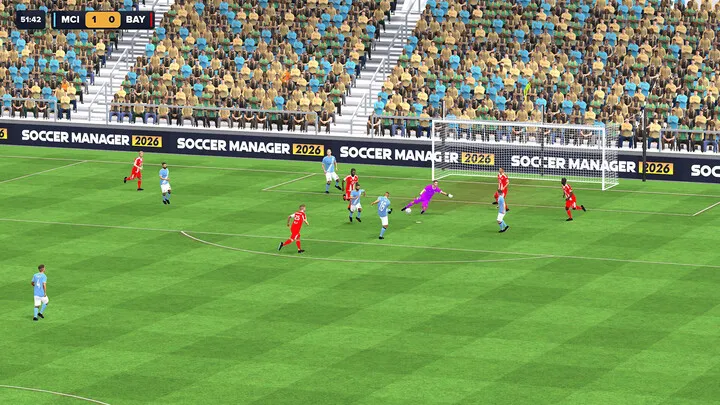Football Manager 2026 (FM26) isn’t just another seasonal refresh—it’s a tactical revolution. With the introduction of the Tactical Intelligence Engine (TIE), every decision you make is under constant observation. Opponents learn your strategies, players evolve mid-game, and success depends on adaptability more than ever before.
This guide dives deep into one core area of FM26: mastering tactical systems and adaptability. If you’re serious about outsmarting AI managers and building a lasting football dynasty, this 3000-word guide will show you how to think, adapt, and dominate.
1. Understanding the Tactical Intelligence Engine (TIE)
The Tactical Intelligence Engine is the backbone of FM26’s innovation. It simulates how AI managers learn from your tactics, analyzing your patterns across games. This means your opponents won’t fall for the same trick twice—they’ll adjust their line-ups, defensive blocks, and pressing structures to counter your style.

Key Change: Adaptive AI Analysis
If you’ve built your strategy around a false nine or an inverted winger, be prepared for the opposition to adapt. TIE tracks your player movements, formation consistency, and chance creation zones to plan countermeasures in the next match.
Tips:
- Rotate formations every 3–5 games to confuse AI scouting.
- Study the Opposition Report before every match to anticipate changes.
- Prepare a secondary tactic with a different tempo and defensive line.
2. Building a Tactical Philosophy That Evolves
In FM26, a static tactic won’t carry you far. Instead, think of your tactical setup as an evolving ecosystem. Your philosophy should shift based on form, fitness, and opposition strategy.
Defining Your Core Philosophy
Before creating any tactic, analyze your squad’s attributes and identity. Are your players technically skilled or physically dominant? If you’re managing a club like Real Sociedad, a possession-oriented build suits you. But if you’re at Burnley, a structured and counter-attacking approach will yield better results.
Step-by-Step Guide:
- Evaluate key attributes of your core XI.
- Choose a tactical identity—possession, transition, or pressing.
- Adjust mentality and shape per match while keeping a stable foundation.
The key to FM26’s tactical success is flexibility within consistency. You can change the tempo or roles, but your team’s DNA should stay recognizable.
3. Data Hub 2.0: The New Tactical Analysis Frontier
FM26’s Data Hub 2.0 is a tactical manager’s dream. It provides AI-driven reports showing how effective your playstyle really is. You’ll see your chance creation zones, pressing resistance, and xThreat values (expected threat generated).

How to Use It:
The “xThreat Model” doesn’t just track shots—it monitors how dangerous your buildup play is. If your right flank’s contribution is consistently low, it’s time to tweak overlapping instructions or switch your winger’s role.
Pro Tips:
- Compare your “xThreat” and “xConcede Zones” to identify weak links.
- Use heatmaps to detect fatigue or defensive gaps late in matches.
- Assign a dedicated analyst to review weekly trends for specific player roles.
The Data Hub is no longer optional; it’s the tactical lab that separates elite managers from amateurs.
4. Dynamic Player Roles and Real-Time Adaptation
FM26 introduces Dynamic Roles—a groundbreaking evolution in player behavior. Instead of static positions, players now adapt to match context. For example, a Mezzala might drop deep during defensive transitions or move wide when pressing high.
Maximizing Role Flexibility
Create tactical patterns that allow positional rotations. Combining an Inverted Wing-Back with a Mezzala creates spontaneous overlaps that AI defenders struggle to contain.
Example Setup:
- Left Flank: Inverted Wing-Back + Inside Forward.
- Central Midfield: Deep-Lying Playmaker + Mezzala.
- Result: Controlled build-up with spontaneous attacking overloads.
Dynamic roles reward managers who think two phases ahead. Instead of instructing “how” to move, you’re now creating “conditions” where players adapt intelligently.
5. Squad Rotation and Tactical Consistency
FM26 redefines the importance of rotation. Tired players don’t just lose stamina—they lose tactical awareness. The new Familiarity Matrix tracks how well players understand your tactical setup, even when they’re not starting regularly.

Understanding Tactical Familiarity
Every player has a familiarity score that tracks their understanding of build-up, transitions, and defensive structure. When substitutes lack familiarity, your system breaks down in key moments.
Rotation Strategy:
- Always have two capable players per key role.
- Use cup games to build secondary team familiarity.
- Include “Tactical Shape” sessions in training every week.
A well-rotated squad in FM26 isn’t just fit—it’s synchronized. Tactical depth now means mental readiness as much as physical fitness.
6. Opposition Analysis and Mid-Game Adjustments
Your tactical decisions don’t end at kickoff. FM26’s AI evolves mid-game, recognizing patterns in your possession and pressing. Managers who fail to react are punished.
Reading Momentum Shifts
The new Momentum Graph shows energy surges, lost duels, and ball recoveries. If you see momentum dropping, it’s time to change the rhythm—slow the tempo or adjust the pressing trap.
Adjustment Checklist:
- Monitor individual “Pressure Resistance” stats.
- Drop your defensive line when protecting a narrow lead.
- Use tactical shouts like “Focus” or “Encourage” to manage emotions.
Adapting in real time is no longer optional—it’s survival. Games can swing in five in-game minutes if you fail to respond to AI recalibrations.
7. Training Synergy: Turning Vision Into Execution
FM26’s training module now measures Synergy Score—how effectively your sessions reinforce tactical structure. Generic training won’t cut it. You must design sessions that mirror your match strategy.
Building Tactical Training Blocks
Alternate between defensive and attacking transition days. Include match simulations that replicate your preferred tempo and shape. This helps your players internalize movements instead of memorizing drills.
Advanced Training Tips:
- Align training intensity with morale and schedule density.
- Assign assistant managers with tactical compatibility.
- Conduct monthly synergy reports to spot weak positional links.
Your team should play as they train. High synergy leads to faster tactical execution, fewer positional errors, and smoother transitions.
8. Mentality Mastery and Tactical Psychology
Football Manager 2026 introduces dynamic mentality behavior—your players’ confidence, morale, and pressure handling directly affect tactical execution.

How to Control Tactical Psychology
Switching from Balanced to Positive mentality can energize your attack but also widen defensive gaps. Overusing an Attacking mentality may fatigue players mentally, not just physically.
Tips for Mental Control:
- Observe body language and morale during games.
- Adjust mentality at halftime, not mid-phase, to avoid confusion.
- Use team talks and shouts to maintain focus under pressure.
Mentality management is as important as tactical setup. A well-balanced mentality rhythm builds composure and consistency throughout long seasons.
9. Youth Integration and Tactical Continuity
In FM26, your youth setup isn’t separate—it’s a tactical investment. The new Development Alignment system ensures that youth players learn in systems that mirror the first team’s approach.
How to Build Tactical Continuity
Train U18 and U21 squads in the same shape and instructions as your senior side. This ensures that when promoted, young players already understand the system.
Youth Development Tips:
- Align youth training and match tempo with senior tactics.
- Use the “Tactical Adaptability” stat to evaluate readiness.
- Gradually introduce youth players in low-pressure fixtures.
Building a consistent tactical identity ensures your club philosophy survives manager changes and generational shifts.
10. Endgame Strategy: Sustaining Tactical Dominance
The biggest test in FM26 isn’t building a winning tactic—it’s sustaining one. Over time, AI managers study your data and adapt. Stagnant systems eventually collapse.
Creating a Legacy Tactic
Evolving your system season-by-season ensures long-term success. Review Data Hub metrics every six months and introduce subtle tweaks to stay unpredictable—adjust your pressing trigger, invert your full-backs, or modify buildup patterns.
Checklist for Longevity:
- Perform seasonal tactical audits.
- Refresh player roles to suit evolving squad traits.
- Recruit with tactical flexibility in mind.
Sustained dominance in FM26 is a chess match against time and technology. Adaptability becomes the mark of true mastery.
Conclusion
Football Manager 2026 challenges you to think like a real manager. The Tactical Intelligence Engine ensures every decision has consequences. Success isn’t about rigid strategies—it’s about evolution, synergy, and anticipation.
By mastering data analysis, dynamic roles, and mental momentum, you’ll stay one step ahead of even the smartest AI managers. Every season becomes a tactical experiment, every match a lesson in adaptation. Those who evolve will thrive. Those who don’t will fade.

















